History of the Border Collie
One of the most well-known Scottish dog breeds, the history of the Border Collie is inextricably linked with the history of every herding dog to originate in Scotland. And there are several of those.
While the Border Collie breed as we know it today wasn’t formally recognized until the late 1800’s, herding dogs/collies/shepherds dogs have existed in Scotland, the rest of Britain, and in many countries around the world for thousands of years.
From the very first time that humans began to keep domestic flocks of sheep and herds of cattle, they’ve needed herding dogs to work with them. So, it’s not unreasonable to think that shepherd’s dogs existed as far back as several thousand years BC.
But, like the history of many Scottish dog breeds, the origins of the Border Collie are ancient, and shrouded in mystery.
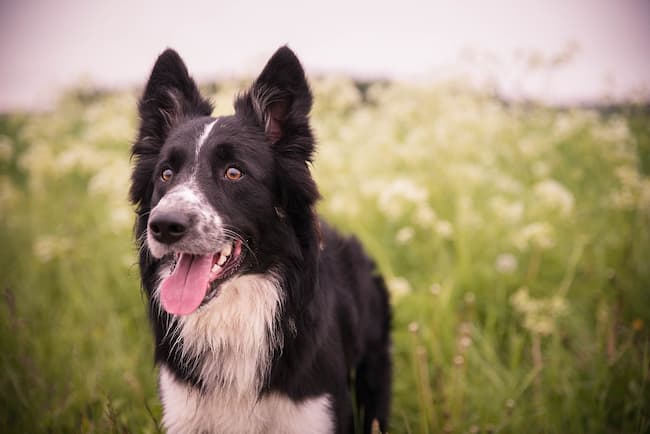
Early History of the Border Collie
Let’s start in the 16th century with a book entitled ‘The Dogs of Britain’ written originally in Latin by John Keys of Norwich, England (who changed his name to Johannes Caius after graduating from Gonville Hall in 1533).
Published in English in 1576, Caius mentions herding dogs who worked flawlessly in response to their owner’s voice and whistle. This is very similar to the working style seen in Border Collies. You can see the actual wording and learn more about Johannes Caius here.
Just over two hundred years later, Thomas Bewick of Northumbria, published a book called the General History of Quadrupeds’ which included a woodcut image of a shepherd’s dog that looked similar to both today’s Border Collie and the Rough Collie. Because there is no color in the image it’s impossible to tell coat color and at the time this book was written many herding and collie dogs were very similar in type.
Although their black and white coat is instantly recognizable today, the early collies in the Border Collie ancestry came in a variety of coat colors, including tri-color (black, brown, red base color with white patches around the neck/shoulders and another lighter color on the face, paws and tail), red and white, and brown and white.
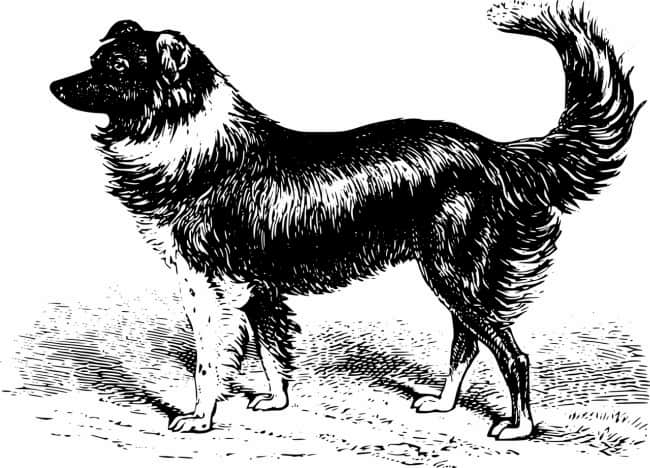
There’s little doubt that the direct ancestors of today’s
Border Collie are among the multitude of Scottish Collies (or Colleys), herding
dogs and Shepherd’s dogs who were working flocks in the craggy and rugged
Scottish landscape for centuries before any written records were made.
The value and importance of farmers, crofters and shepherds owning good working dogs in Scotland is summed up beautifully in the words written by James Hogg in 1824.
This excerpt is taken from his work ‘The Shepherd’s Calendar’.
'Without the shepherd’s dog, the whole of the open mountainous land in Scotland would not be worth sixpence. It would require more hands to manage a stock of sheep, gather them from the hills, force them into houses and folds, and drive them to markets, than the profits of the whole stock were capable of maintaining.’
Dogs used to herd livestock come in a variety of shapes, sizes, coat types and personalities, even in a country as small as Scotland.
They also varied in terms of working style, and from that common ancestor pool the Border Collie, Rough Collie and Bearded Collie eventually emerged due to selective breeding for certain traits.
The type of shepherd’s dog that became the modern-day Border Collie were most common in the areas surrounding the English/Scottish border… often called the Borderlands, hence the breed name.
The following photographs are from 'The New Book of the Dog' by Robert Leighton, published in 1907.
In this book, herding dogs like these were still under one category 'The Collie'. In the first two photos you can see early examples of the Border Collie, the third photo is a Rough Collie.
If you're a dog lover interested in the history of today's breeds you can download a PDF copy of this fascinating book here.
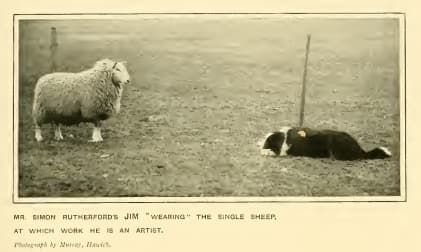
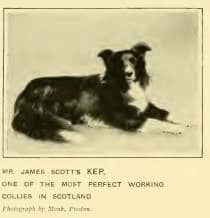
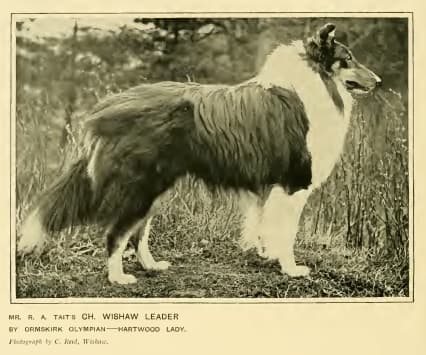
The Emergence of the Border Collie
In order to efficiently herd flocks of sheep across uneven, rocky and harsh terrain, sometimes across considerable distances, the dogs needed to be surefooted, agile and fast.
They also needed to have boundless energy, considerable stamina, be independent, highly intelligent and almost supernaturally responsive to human direction.
The ancestors of today’s Border Collie fit the bill, and as the recognized Border Collie breed has been shaped and honed for looks and ability, they have become one of the most dedicated, successful and popular herding dogs of our time.
The earliest sheepdog trials that included participants from across Britain were held in Bala, Wales, in 1873 and it was a Scottish herding dog who took first place.
In 1883 it was another Northumberland herder who first used an uncharacteristically low key way to control his sheepdog at a herding trial, described by an onlooker as using only ‘a mere hiss at his hand and a low whistle at distance’.
This was the first recorded display of what is now the unique and characteristically Border Collie style of herding.
Border Collie Herding Magic!
A unique characteristic of the way a Border Collie controls a flock or herd is by using his eyes to lock onto the livestock, using a directness but steady gaze to intimidate, and control, without frightening them.
A ‘strong-eyed’ dog is desirable for working purposes. It’s almost like hypnotism!
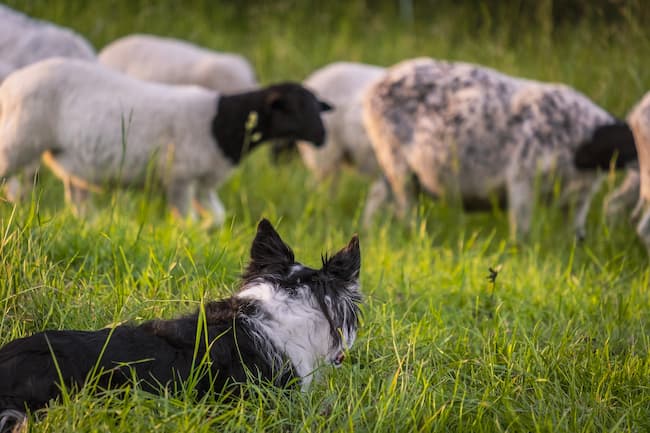
There is one specific shepherd’s dog who is believed to be THE founding dog of the Border Collie breed, a common ancestor of all the Border Collies alive today.
His name was Old Hemp.
'Old Hemp' Father of the Border Collie Breed
Old Hemp (aka Auld Hemp) was a ‘rough-coated’, tri-color herding dog, born in Cambo, Northumberland (Northern England) in 1893.
His parents were a black sheepdog named Meg, who was a successful and intense herding dog, and a tri-colored herding dog, Roy, who didn’t possess the same work ethic as Meg but had an ‘overly nice’ temperament.
Old Hemp apparently won the genetic lottery in this pairing and inherited all the best traits from each of his parents.
Apparently Old Hemp wasn’t anything special to look at, but his herding abilities were instinctive and incredible, demonstrated first for the first time when he was only six weeks old.
Old Hemp's owner was a farmer and shepherd named Adam Telfer who had owned and worked with herding dogs his whole life, so he wasn’t necessarily easy to impress or prone to exaggeration!
But the natural aptitude and unique style that Old Hemp showed when working the sheep excited him (the dog used his body and speed to herd the sheep rather than relying on his bark).
Telfer was reported to have said this about Old Hemp ‘… he flashed like a meteor across the sheepdog horizon. There never was such an outstanding personality’.
An author of that time, is quoted as having said this about Old Hemp ‘none who saw him ever forgot him… Almost faultless in work… he was born with such knowledge of his craft that he never required training and went to his work naturally.'
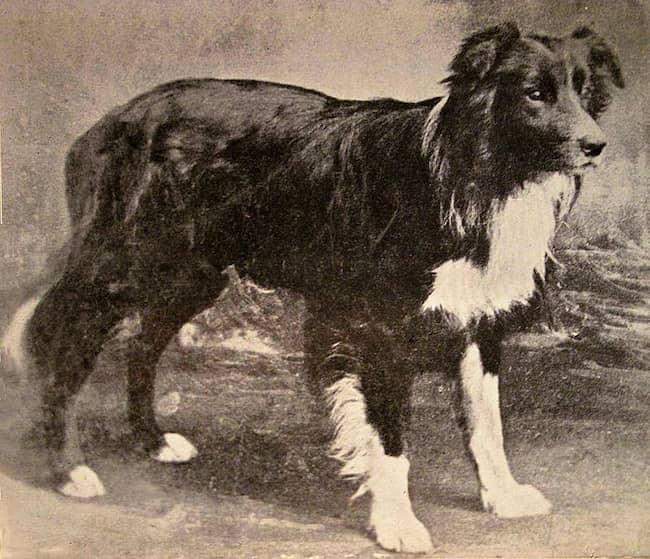 Auld Hemp (aka Old Hemp)
Auld Hemp (aka Old Hemp)Because he was such an amazing worker, Old Hemp was in big demand from local (and not so local) people as a mate for their dogs. In fact, Old Hemp is believed to have fathered as many as 200 puppies in his lifetime.
The International Sheep Dog Society was founded in 1906, well after Old Hemp was born and had started working, but he was so incredibly important to the Border Collie breed that his name was added to the stud book and is shown as entry #9.
If the ISDS had been established earlier, I’m sure Old Hemp would have been in first place.
In her book ‘Key Dogs from the Border Collie Family Volume II’, Sheila Grew states that ‘Of the first 29 winners of the International Championships after 1906, all, with only one or two exceptions, carried the blood of Hemp on one or both sides of breeding.'
These were working trials/competitions and an impressive statistic to add to Old Hemp’s legacy.
Old Hemp is considered to be the ‘Father of the Border Collie breed’ and generously passed on his rough coat and unique herding abilities which the basis for the look, and unique herding style, of today’s Border Collies.
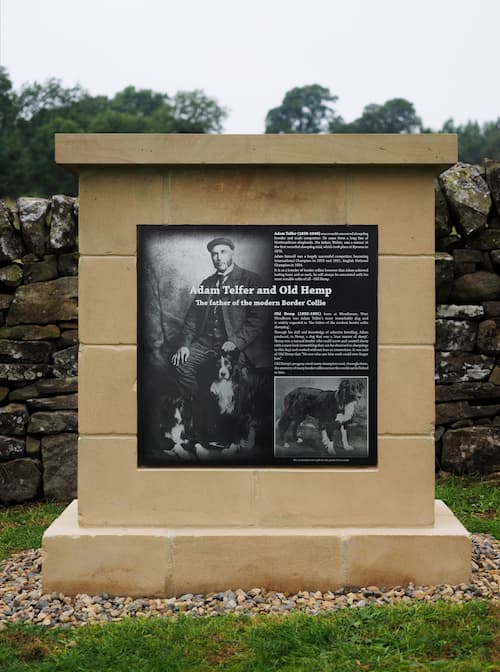 Old Hemp Memorial in Northumberland, UK
Old Hemp Memorial in Northumberland, UK
Own work, CC BY-SA 3.0, https://commons.wikimedia.org/w/index.php?curid=43031464
Today's Border Collie
Up until the 1860’s Border Collies were exclusively bred as working dogs, but in the late 1800’s dog shows (for looks ie conformation, not working ability) started to garner interest.
After seeing Border Collies during a visit to Balmoral Castle, Queen Victoria is said to have become a fan of the breed and this made them popular with a wider audience, in both Scotland and England.
Luckily for the Border Collie, breed enthusiasts realized early on that a good show dog and a good working dog were two entirely different things, and that trying to combine the two would be very bad news for the breed as a whole.
After this time the distinction was made between bloodlines for working dogs and bloodlines for show dogs, that way the unique and incredible Border Collie herding style was maintained and continued to be passed down from generation to generation.
Not only are they still dominant in sheepdog and herding trials, but because of their intelligence, physical capabilities and desire to work, they excel at competitive obedience, agility, flyball and more.
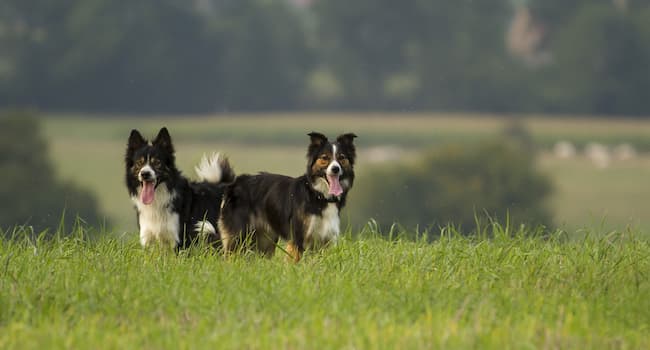
The Border Collie became a breed recognized by the Kennel Club in Britain in 1976.
Prior to that time Border Collies were registered with the ISDS and those dogs were the foundation of the dogs registered with the Kennel Club. So, at least initially, the Kennel Club dogs had strong working bloodlines.
The AKC recognized the Border Collie (in the miscellaneous class) in 1955, and fully recognized in 1995
Even today, many dedicated Border Collie breeders and enthusiasts are opposed to these dogs being bred for ‘looks’ rather than for working ability. This breed is, in its very essence, a working dog and organizations, like the International Sheep Dog Society and the American Border Collie Association, exist to make sure that it continues to be just that.
The ABCA are still strongly opposed to Border Collies being bred for looks rather than working ability. In fact, even today, a Border Collie cannot hold dual ABCA/AKC registration. It’s an either/or situation.
The friction between breeders of working Border Collies and show Border Collies is present on both sides of the Atlantic, and the Kennel Club doesn’t refer to any Border Collie who is not from KC registered bloodlines as such, instead they call them ‘working sheepdogs’.
If you’re interested in adding a registered Border Collie to your family, it’s good to know that KC or AKC registered dogs are likely to be good physical representatives of the breed but not necessarily make good working dogs. And vice versa. ‘Horses for courses’, as they say.
In her book ‘Key Dogs from the Border Collie Family’ first published in 1981, Sheila Grew describes four recognizable ‘Types’ of Border Collie: the Northumbrian Type; the Wiston Cap Type; the Nap Type and Herdman’s Tommy Type.
Each type has its own, individual characteristics and some of them share ancestors. Here’s a quick look at each one:
Northumbrian Type:
Direct descendants of ‘Old Hemp’ with every dog being able to trace it’s lineage back to him. Medium sized dog. Rough coat, minimum white patches which predominantly appear around the neck, with some on the legs, muzzle and sometimes the tip of the tail. By now we know a lot about Old Hemp’s characteristics and abilities and this Border Collie type aims to continue his excellence and uniqueness in terms of working ability.
Wiston Cap Type:
Founding dog was ‘Wartime Cap’ (aka Wiston Cap), born during WWII, in 1937, hence his name. Slightly larger than the Northumbrian type dogs. Rough coat, with more white patches than the Northumbrian Type. The white extends from the forelegs and muzzle across the chest, face and towards the belly. White tipped tails. This type is the foundation for many of the Kennel Club show bloodlines today.
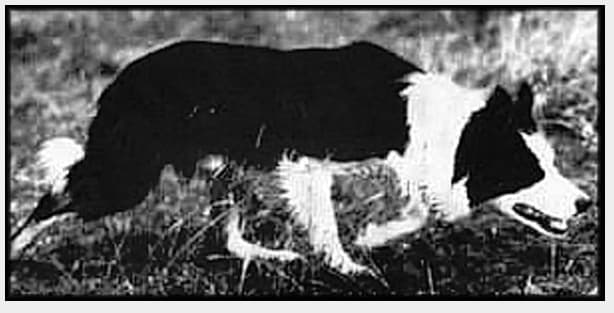 Wiston Cap
Wiston CapNap Type:
This type’s founding dog was ‘Whitelope Nap’ born in 1951, and is the only smooth coated Border Collie type. Although their coats are smooth, and shorter than the other types, they still have that soft undercoat to protect against weather extremes. Overall the Nap Type Border Collies are taller and are more square in appearance (rather than the shorter, longer rectangular shape of the other types). They’re fast and powerful, and most working Border Collies in the USA today are from this type.
The Herdman Tommy’s Type:
This type is also descended from ‘Old Hemp’, with their founding dog being one of his grandsons named ‘Herdman’s Tommy’. Tommy was a solid dog with a rough coat that had the black, white and tan markings of his granddaddy. Today the Herdman’s Tommy type of Border Collie are known for being powerful, strong-willed dogs with a good natured personality, also passed down from their grandfather.
If you’d like to learn more about these, and see photos of some of the earliest dogs in the bloodlines for each type, this page is a great place to go.
Border Collies can learn to herd more than just sheep, or goats. They’re able to herd chickens, ducks, or geese, being gentle and patient enough to deal keep the most recalcitrant duckling in place.
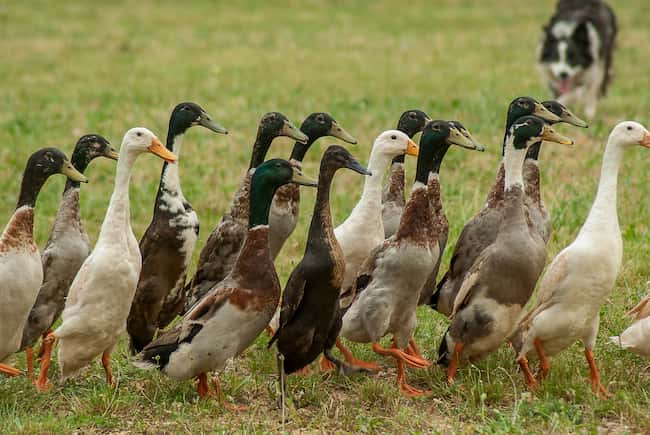
This instinct is so hard wired into their brains that a Border Collie will attempt to herd anything that moves, this includes cats, other small (and not so small) animals, and even children.
So, if you’re considering a Border Collie as a pet, please remember this, and it’s even more important to remember that they are a working breed through and through.
They NEED to work, need to have a job to do, as well as a considerable amount of regular exercise.
They also need to be challenged both physically and mentally in order to be happy and healthy.
A bored or under-stimulated Border Collie can become neurotic, destructive or both.
See a quick overview of Border Collie size, temperament, colors and more on my Scottish Dog Breeds page.
Border Collie Fun Facts
Border Collies have won a lot records, for doing a lot of different things!
Check out the Guinness Book of Records HERE to get an
idea of how incredibly clever, and versatile, this breed is
In 2020 a Border Collie from Northumberland (same home county as Old Hemp) became the most expensive sheepdog ever when she was sold for 18,900 British Pounds!
(Her new owner was an American, so the US now has the worlds most expensive Border Collie)
Citations & References used for info. on this page
- The Kennel Club UK - Border Collie
- AKC.org - Border Collie
- fieldstonebordercollies.net
- American Border Collie Association
- International Sheepdog Society
- Border Collie Museum
- Home
- Scottish Dog Breeds
- History of the Border Collie